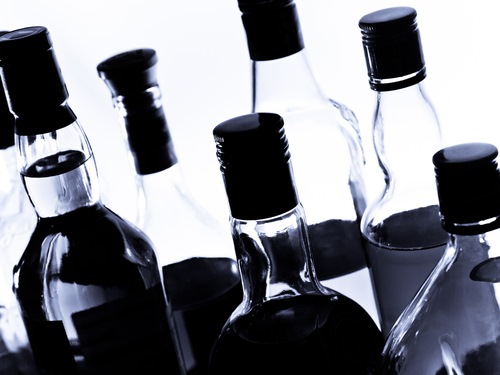
The prevalence of illicit alcohol across some countries in Central and Latin America and Africa is more common than legal alcohol, with counterfeit liquor accounting for more than half of the illicit trade in some states, a new report reveals.
Sixty-six percent of the alcohol consumed in Mozambique is illicit, with the black trade also rife in Uganda (61 per cent) and Cameroon (56 per cent), according to the report by the International Alliance for Responsible Drinking (IARD).
The report, which brings together data on the illicit market in 26 countries compiled by the global market research firm Euromonitor International, calls for the unregulated alcohol market to be actively tackled and brought into the legal and regulated sphere.
According to the report’s data, the market share of illicit alcohol in Central and Latin American countries is less than in Africa but it is still substantial – Mexico, Dominican Republic, Brazil and Peru consume 34 per cent, 29 per cent, 28 per cent and 27 per cent illicit alcohol respectively. And bootleg liquor accounts for 38 per cent of the market in Russia, the report said.
Meanwhile, counterfeit alcohol is more common in Central and Latin America than in Africa, the report notes, where fakes account for up to 52 per cent of the illicit market.
Illicit alcohol includes contraband/smuggled, counterfeit & illegal, illegal artisanal & illegal informal (alcohol produced outside of a regulatory framework), surrogate (alcohol-containing products not meant for human consumption) and tax evasion.
According to the World Health Organisation, illegal and informally produced alcohol made up an average of about 25 per cent of all alcohol consumed worldwide in 2010.
“Alcohol produced and sold illegally outside of government regulation is the most problematic part of unrecorded alcohol; it is untaxed, circumvents restrictions around availability, is of inconsistent quality, and, depending on the ingredients used to make it, is even potentially toxic,” the report said, adding that unregulated alcohol is more widespread in lower income countries than in more affluent ones and contributes to widening health inequalities. “The illicit sector is not only large but also comes at a significant cost.
According to the report, Colombia’s and Peru’s illicit market is made up of 52 per cent counterfeit alcohol, while 50 per cent of El Salvador’s and 33 per cent of Uganda’s illicit market is counterfeit.
The report said that the combined fiscal loss to governments in 18 of the countries included in the report adds up to more than $1.8bn. “Illegal alcohol, particularly counterfeit and smuggled products, can erode confidence in government standards, enforcement, and in the integrity of legitimate, regulated brands.”
The report noted the role of large-scale organised crime in the production of counterfeit alcohol and the lack of sufficient enforcement and penalties to act as a deterrent. The report also noted the affordability, availability and culture that contributed to the prevalence of illicit alcohol in many lower-income countries. In Ecuador, for instance, the average price of illegal alcohol is 89 per cent of the price of legal alcohol.
Earlier this year almost 150 people died in Indonesia from poisoning by alcohol adulterated with mosquito repellent and cough medicine. Meanwhile, in Mexico police seized approximately 20,000 gallons of illegal alcohol in February and reported that 235 gallons of it contained high levels of methanol.
The report highlighted some approaches to putting an end to illicit alcohol and bringing it into the legal realm, including appropriate pricing and regulations across the different consumable and non-consumable alcohol types, education campaigns, and technology and innovation for authenticity.
“Tackling the unregulated market is everyone’s business; governments, communities, and legitimate producers share a commitment to reducing harmful drinking and to common objectives: bringing unregulated alcohol into the regulated fold and putting a stop to illegal production and trade,” the report said.
“These objectives can only be achieved where there is an enabling regulatory framework that allows legitimate businesses to thrive and does not encourage a shadow economy. Partnerships between government, the private sector, and civil society in a whole-of society approach can help promote a virtuous circle of growth and health that is in everyone’s interest.”
©
SecuringIndustry.com
 | back to top
| back to top






